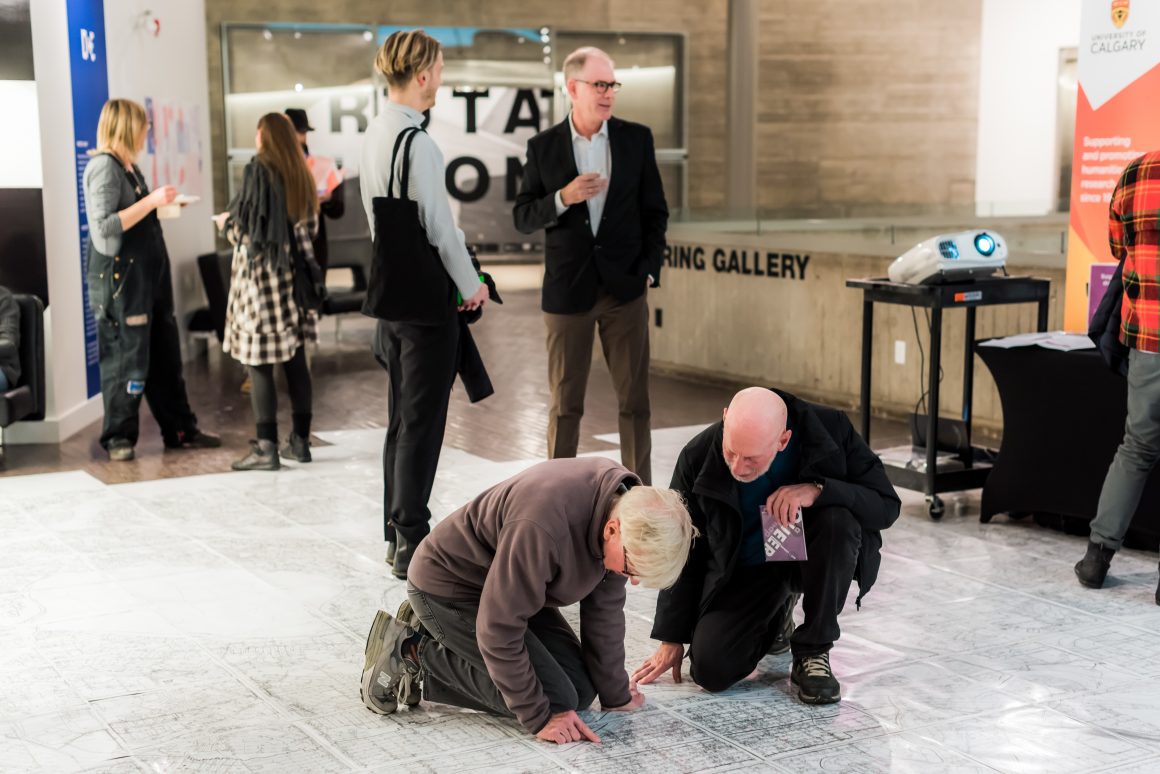
Calgary Atlas Project launches A Queer Map
By Nikayla Goddard, November 26 2019 —
In celebration of Calgary’s rich and diverse history, the first of many maps recognizing real but often forgotten stories of the past was launched on Nov. 21. A Queer Map: A Guide to the LGBTQ+ History of Calgary, is an initiative of the Calgary Atlas Project under the Calgary Insitute for the Humanities (CIH), which seeks to bring the history of queer communities, Indigenous histories, immigrant communities, labour movements and other components of Calgarian history to light.
CIH describes the Calgary Atlas Project as a project that “seeks to recover crucial stories about Calgary’s past and present, stories that will illuminate in surprising ways the character of the city.”
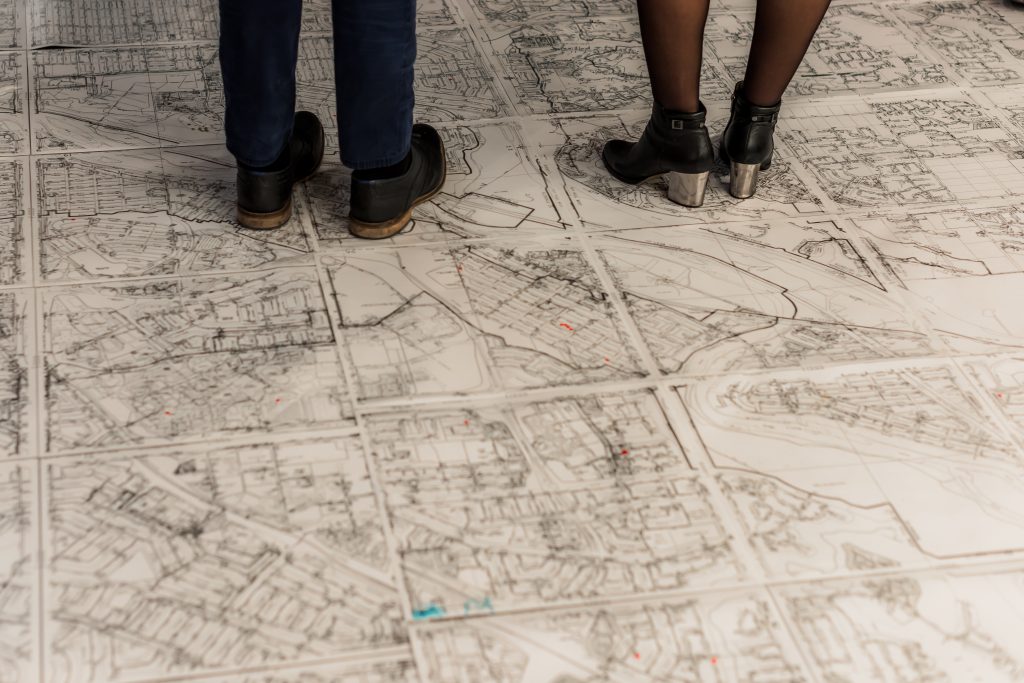
The event was hosted at Contemporary Calgary, where Dr. James Ellis, director of the CIH and English professor at the University of Calgary, Kevin Allen, who wrote the script on the map, and Mark Clintberg, who did the map artwork, each gave a speech on the importance of initiatives like the Atlas Project.
The map lists about 50 sites and is the first of 18–20 maps that are set to be completed within the next decade, according to Ellis. The next map is by a well-known Blackfoot artist Adrian Stimson, who is mapping the relationship between the Indigenous communities and the Calgary Stampede on a buffalo robe before photographing to turn it into a conventional paper map.
Other Calgary Atlas Project maps include exploring radical history and activism, the waves of migration through mapping ethnic restaurants in the east side of the city and Calgary’s lost movie theatres.
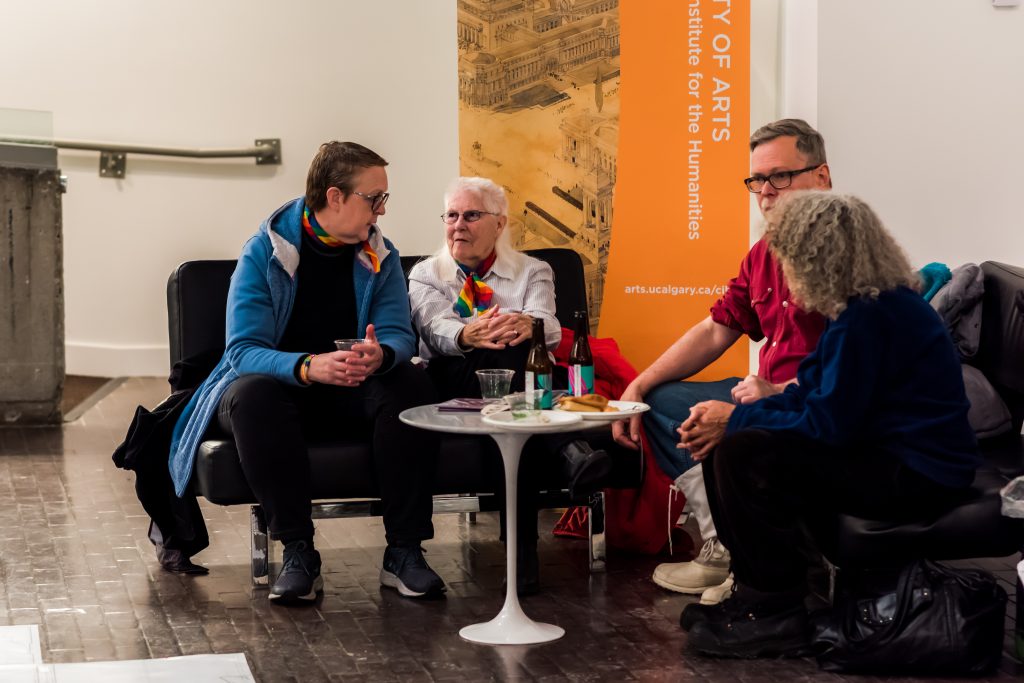
When asked on how the project came about, Ellis responded, “We decided on this alternative history project. We wanted to think about exploring the different histories of Calgary instead of just the official one.”
In the opening speech of the night, Ellis cited that the CIH “exists to promote humanities research at the University of Calgary. We’re Canada’s oldest humanities institute — we’re very proud of that — and we also work to promote value in research in the community. […] This project seeks to recover crucial stories about Calgary’s past and present. Stories that we hope to illuminate in surprising ways, that show us the character of the city, bringing into significance overlooked places, places we pass by every day that we unknowingly move past […] that hold the histories of different people.”
Kevin Allen, research lead for the Gay History project, wrote all the text on the map and spoke next, saying that “queer history is important because our history hasn’t been recorded in archives and libraries and it needs to be saved.”
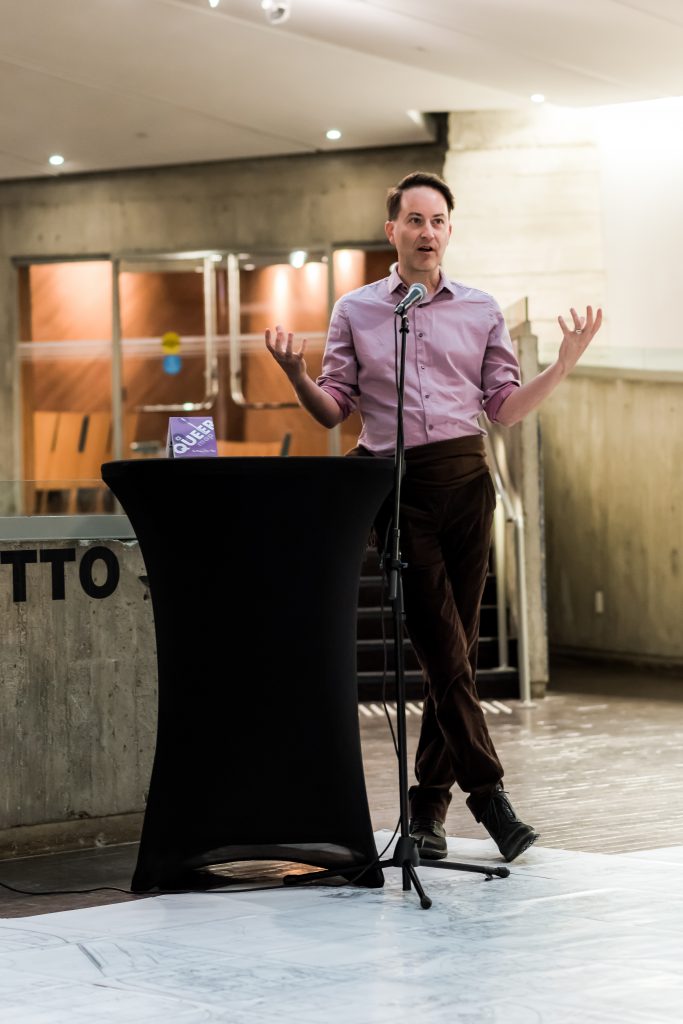
Map artist Mark Clintberg spoke last, diving into the importance of recognizing all facets and people involved in the map’s history.
“Tonight is a night to celebrate site and legacy, and I think that’s such an important thing to be thinking about today when our communities are being deracinated,” Clintberg said. “We’re here to celebrate lesbian, gay, bisexual, trans, intersex, two-spirited and asexual identities and the places that they claim.”
Attendee Craig Lewington remarked, “I love events like these. I think they are very necessary to provide context and history of our communities.”
The launch was well-attended, but Ellis remarked on the need to get more people involved and aware, particularly students.
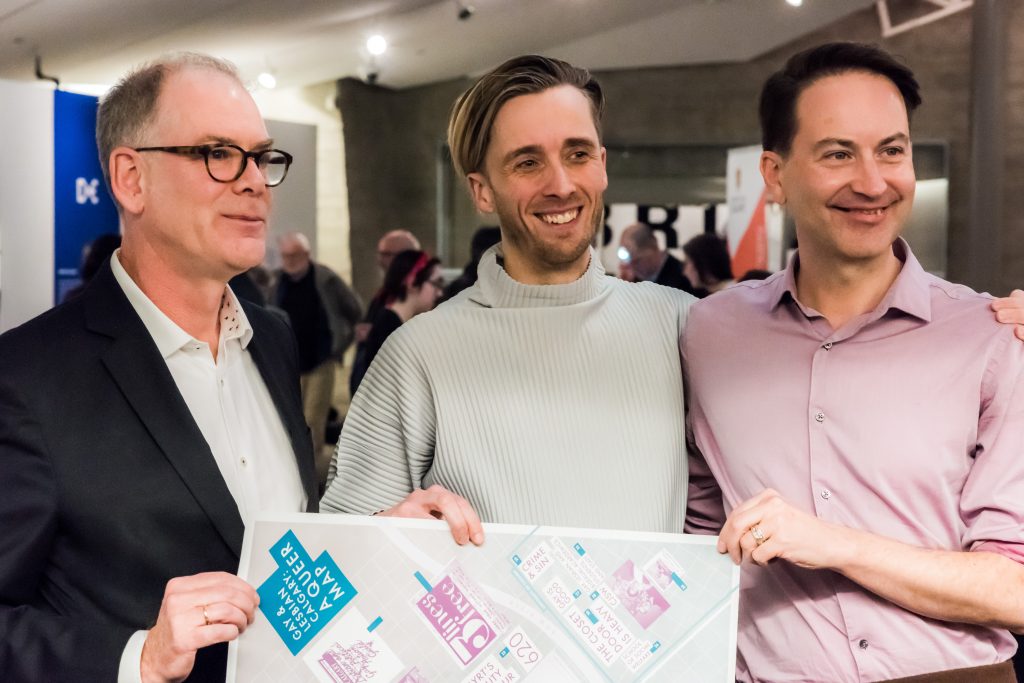
“It would be great if more students had access to this kind of information and these stories about Calgary,” he said. “I think it’s a nice way of showing what the humanities are good for. The maps bring together geography and history and stories and art and design to show us different things about ourselves, different things about community, how we belong together, and so on.”
There are seven sites on the map that feature UCalgary, including Harold Call, a gay publisher and activist, speaking at the old MacEwan Hall Ballroom in 1969 on “Homosexuality: A police industry”; Blue Jeans Day and the GLASS Office at the McKimmie Library; the School of Social Welfare’s early academic exploration of Calgary’s gay community; the Gauntlet as a site for ads and columns to push gay liberation and provide support; CJSW’s first queer show called Speak Sebastian; Sir John Wolfenden’s lecture in the old MacEwan Hall Ballroom in 1973 that sparked debate between distinguishing private life and sexuality from politics; and the Gay Academic Union in MacHall in 1977 that established an ongoing series of talks and was monumental in rallying the gay and lesbian community on campus, which later became GLASS and then Queers on Campus.
